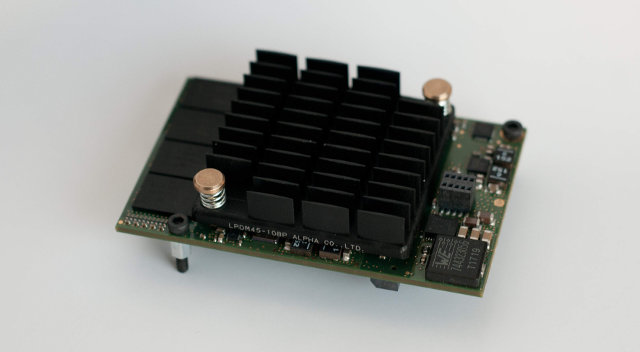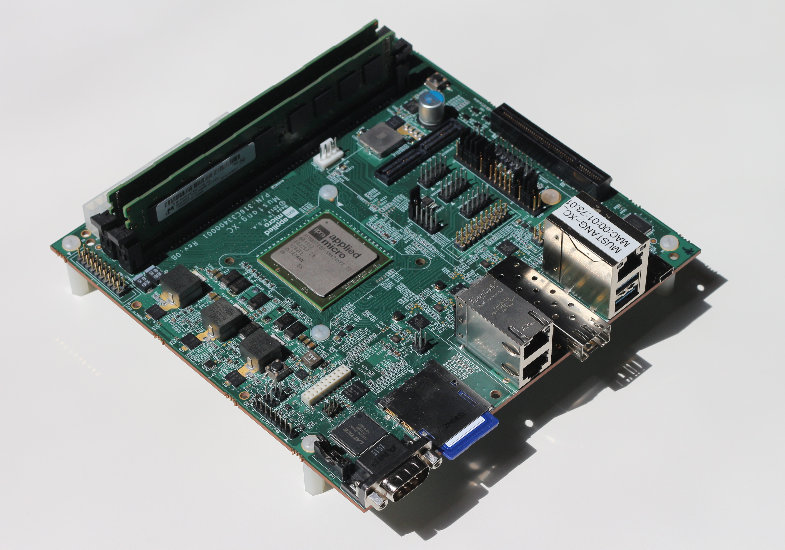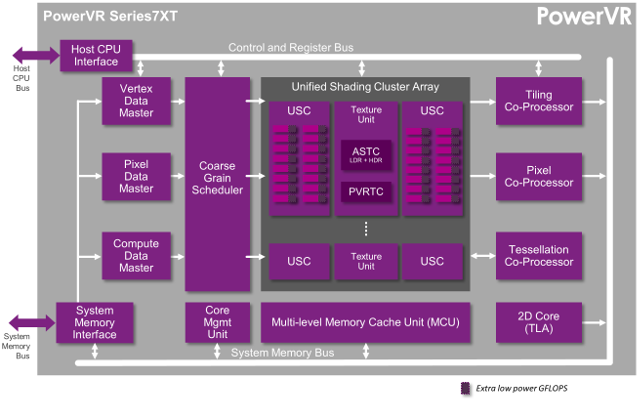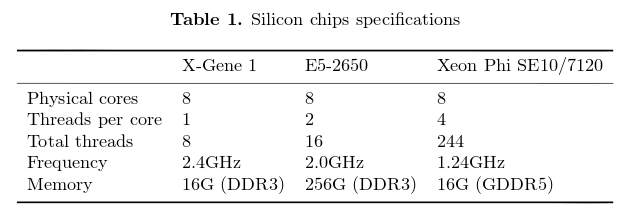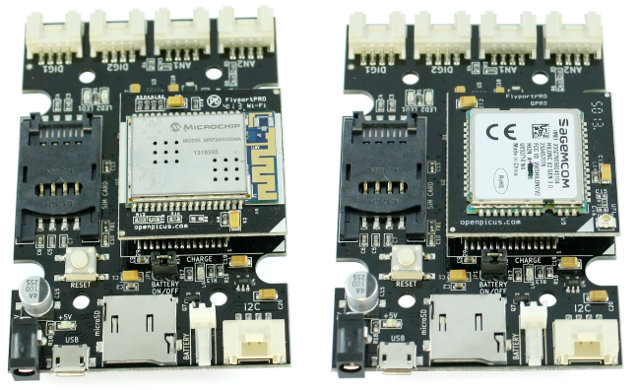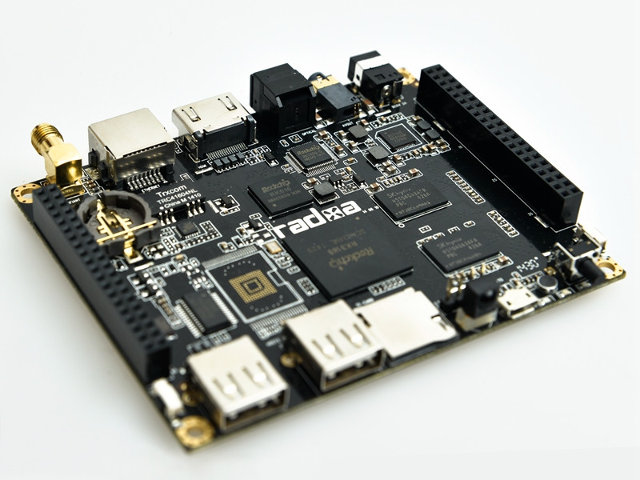Iliad (Free) is a French company known to bring the price of technology down for the masses. Several years ago, they disrupted the Internet broadband market, by bringing low cost triple play broadband services to market, and more recently they entered the mobile market with 2 Euros 3G/4G monthly subscriptions. The company also owns Online.net providing hosting services, and which has recently launched a public preview for Online Labs cloud platform. Most hosted solutions nowadays relies on x86 servers and virtualization, but Online Labs instead features dedicated physical ARM servers connected to SSDs. The company call their custom-made credit-card size server modules C1 boards, completely unrelated to ODROID-C1 boards, as those are powered by a quad core ARMv7 Marvell processor with 2GB RAM, and a 1Gb/s network interfaces. These are then assembled into racks as shown below. And finally 16 racks are inserted into a chassis with a control board, […]
Applied Micro XC-1 Server Development Board (Mustang) is Now Available to Developers for $895
64-bit ARM server boards such as Applied Micro XC-1 Mustang and AMD Opteron A1100 development kit have been available since the beginning of the year, but only to selected companies, and at a price of several thousand dollars per board. Applied Micro is now offering their X-Gene based XC-1 development board to individual developers for $895, or about ~40% discount to the $1495 company now have to pay for the board. It may also be available from distributors (part number: EV-883208-X1-PRB-1). XC-1 board (codenamed Mustang) technical specifications: SoC – Applied Micro X-GeneAPM883208-X1 8-core ARM 64-bit @ 1.6 GHz System Memory – 2x DDR3 UDIMM memory slots up fitted with 2x 4GB sticks (8 GB), upgradable to 16GB Storage – 1x 128Mbit SPI NOR Flash for booting, 1x SATA 3 ports, SD card slot, 1024Kb and 256Kb I2C EEPROM Connectivity – 2x Gigagit port (SGMII), 10 GbE SFP+ cage, 1x Gigabit […]
Imagination Technologies Introduces PowerVR Series7 GPUs with Up to 512 Cores, Virtualization Support
Imagination Technologies has announced a new PowerVR Series7 GPU architecture that will be used in their high end PowerVR Series7XT GPUs delivering up to 1.5 TFLOPS for mid range and high-end mobioe devices, set-top boxes, gaming consoles and even servers, as well as their low power lost cost PowerVR Series7XE GPUs for entry-level mobile devices, set-top boxes, and wearables. PowerVR Series7 GPU, both Series7XT and Series7XE GPUs, can achieve up to a 60% performance improvement over PowerVR Series6XT/6XE GPUs for a given configuration. For example a 64-core PowerVR7XT GPU should be up to 60% faster than a 64-core PowerVR Series6XT clocked at the same frequency, with all extra performance due to a different and improved architecture. Some of Series7 architectural enhancements include: Instruction set enhancements including added co-issue capability, resulting in improved application performance and increased GPU efficiency New hierarchical layout structure that enables scalable polygon throughput and pixel fillrate […]
Applied Micro X-Gene (64-bit ARM) vs Intel Xeon (64-bit x86) Performance and Power Usage
A group of researcher at CERN have evaluated Applied Micro X-Gene 1 64-bit ARM XC-1 development board against Intel Xeon E5-2650 and Xeon Phi SE10/7120 systems, and one of them, David Abdurachmanov, presented their findings at ACAT’ 14 conference (Advanced Computing and Analysis Techniques) by listing some of the issues they had to port their software to 64-bit ARM, and performance efficiency of the three systems for data processing of High Energy Physics (HEP) experiments like those at the Large Hadron Collider (LHC), where performance-per-watt is important, as computing systems may scale to several hundred thousands cores. Intel Xeon Phi platform based on Many Integrated Cores (MIC) computer architecture was launched the HPC market, and contrary to the table above features 61 physical cores. Applied X-Gene 1 (40nm process) was used instead of X-Gene 2 built on 28-nm process which was not available at the time. The ARM platform ran […]
The Egg is a Tizen Based Portable Touchscreen Cloud Server (Crowdfunding)
If you like the convenience of cloud storage, but are wary of privacy implications, and/or are not satisfied by the file download/upload transfer rate, a new device called The Egg might be what you are looking for. It’s a tiny Wi-Fi enabled cloud storage server, powered by an Intel Atom processor and running Tizen, with up to 256 GB storage that you can carry in your pocket, with your data being fully private and always accessible, and there’s also a touchscreen display to let you watch and share your media files. Egg technical specifications: SoC – Intel Atom Processor @ 2.0 GHz System Memory – 1GB RAM Storage – 64, 128, or 256GB eMMC Connectivity – Wi-Fi a/b/g/n (client / access point), Bluetooth 4.0 USB – Micro USB 2.0 type-AB for charging and file transfer from phone, camera, computer… Display – 2.4” Multi-Touch capacitive touch TFT, 240×320 resolution, 262K colors […]
Linux 3.17 Released
Linus Torvalds announced the release of Linux Kernel 3.17 on Sunday: So the past week was fairly calm, and so I have no qualms about releasing 3.17 on the normal schedule (as opposed to the optimistic “maybe I can release it one week early” schedule that was not to be). However, I now have travel coming up – something I hoped to avoid when I was hoping for releasing early. Which means that while 3.17 is out, I’m not going to be merging stuff very actively next week, and the week after that is LinuxCon EU… What that means is that depending on how you want to see it, the 3.18 merge window will either be three weeks, or alternatively just have a rather slow start. I don’t mind getting pull requests starting now (in fact, I have a couple already pending in my inbox), but I likely won’t start processing […]
openPicus Introduces Wi-Fi and GPRS IoT Kits Powered by Microchip PIC24 MCU
openPicus has launched two new development kits for the Internet of Things with either Wi-Fi or GPRS connectivity, based on their FlyportPRO modules featuring a 16-bit Microchip PIC24 MCU, and sharing the same baseboard. These kits can be used as a Web server with firmware update over the air (FOTA) (Wi-Fi version only) among other things, and support TCP, UDP, FTP, & HTTP protocols, as well as MQTT (Message Queue Telemetry Transport), a light weight messaging protocol running on top of the TCP/IP protocol, used when a small code footprint is required and/or network bandwidth is limited. openPicus FlyportPRO Wi-Fi and GPRS modules share mostly the same specifications: MCU – Microchip PIC24FJ256GB206 16-bit MCU @ 32 MHz with 256KB Flash, 96KB RAM External Storage – 16Mbit Flash memory (for FOTA), 64Kbit EEPROM Connectivity GPRS Module – SAGEM HILONC GPRS Transceiver (quad band: 850, 900, 1800, 1900 MHz) with uFL connector for external […]
The New Radxa Rock Lite Rockchip RK3188 Development Board Sells for $59
You may have heard about Radxa Rock Lite development board before, so let’s clear up the different versions of the Radxa Rock first. There’s a total of four Radxa Rock models: Radxa Rock (2013) – The original version with 2GB RAM, 8GB NAND Flash, and Wi-Fi/Bluetooth Radxa Rock Lite (2013) – 1GB RAM, 4GB NAND Flash, and Wi-Fi only Radxa Rock Pro (2014) – An evolution of the Radxa Rock still with 2GB RAM, 8GB NAND flash, Wi-Fi/Bluetooth but adding LVDS and camera interfaces. Radxa Rock Lite (2014) – 1GB RAM, no NAND flash, and Wi-Fi only The fist two versions appear to have been phased out, as they are not listed for sale on Radxa Rock website, and today, I’ll write about Radxa Rock Lite (2014). Radxa Rock Lite (2014) specifications: SoC – Rockchip RK3188 ARM Cortex-A9 quad core @ 1.6Ghz + Mali-400 MP4 GPU System Memory – 1GB […]


